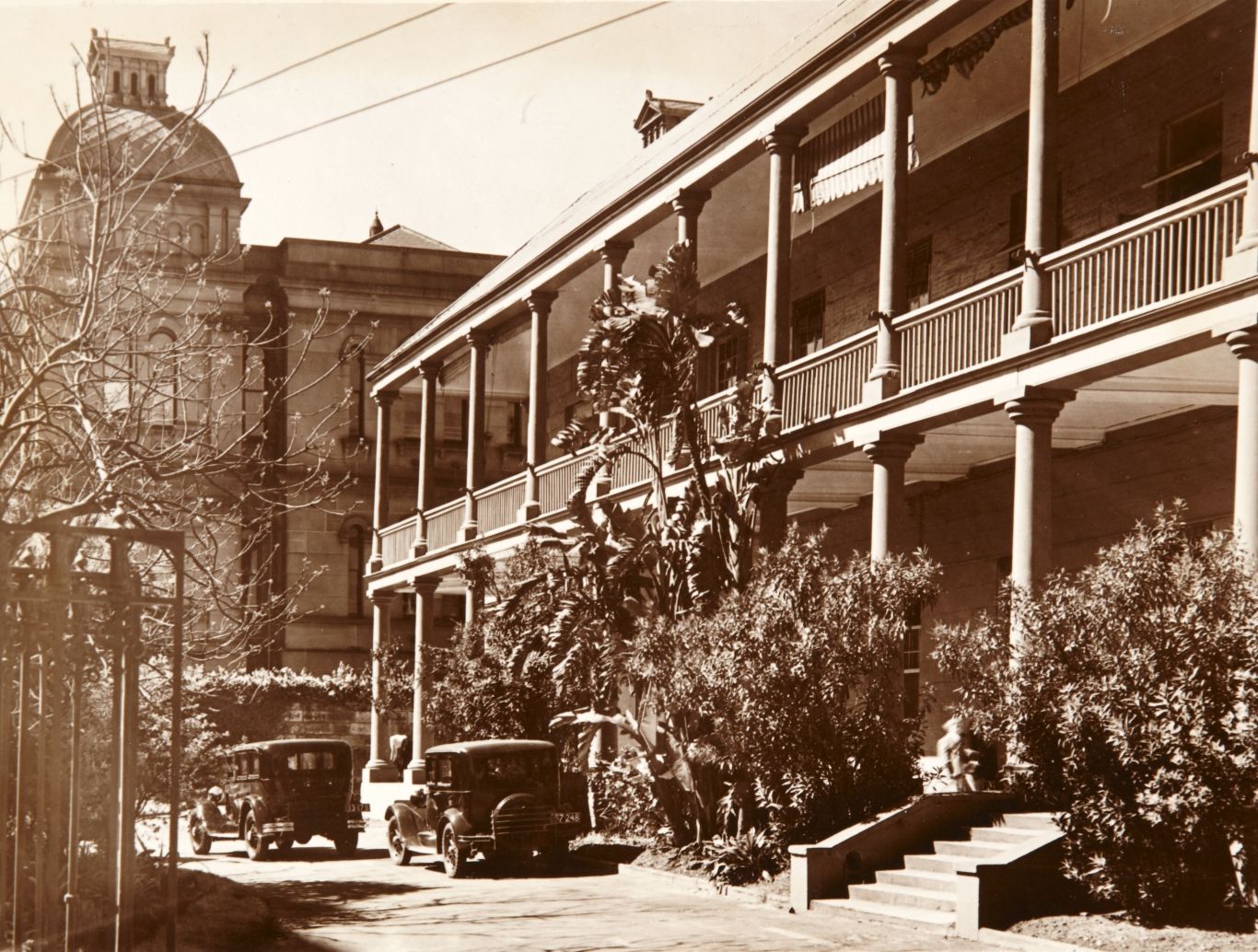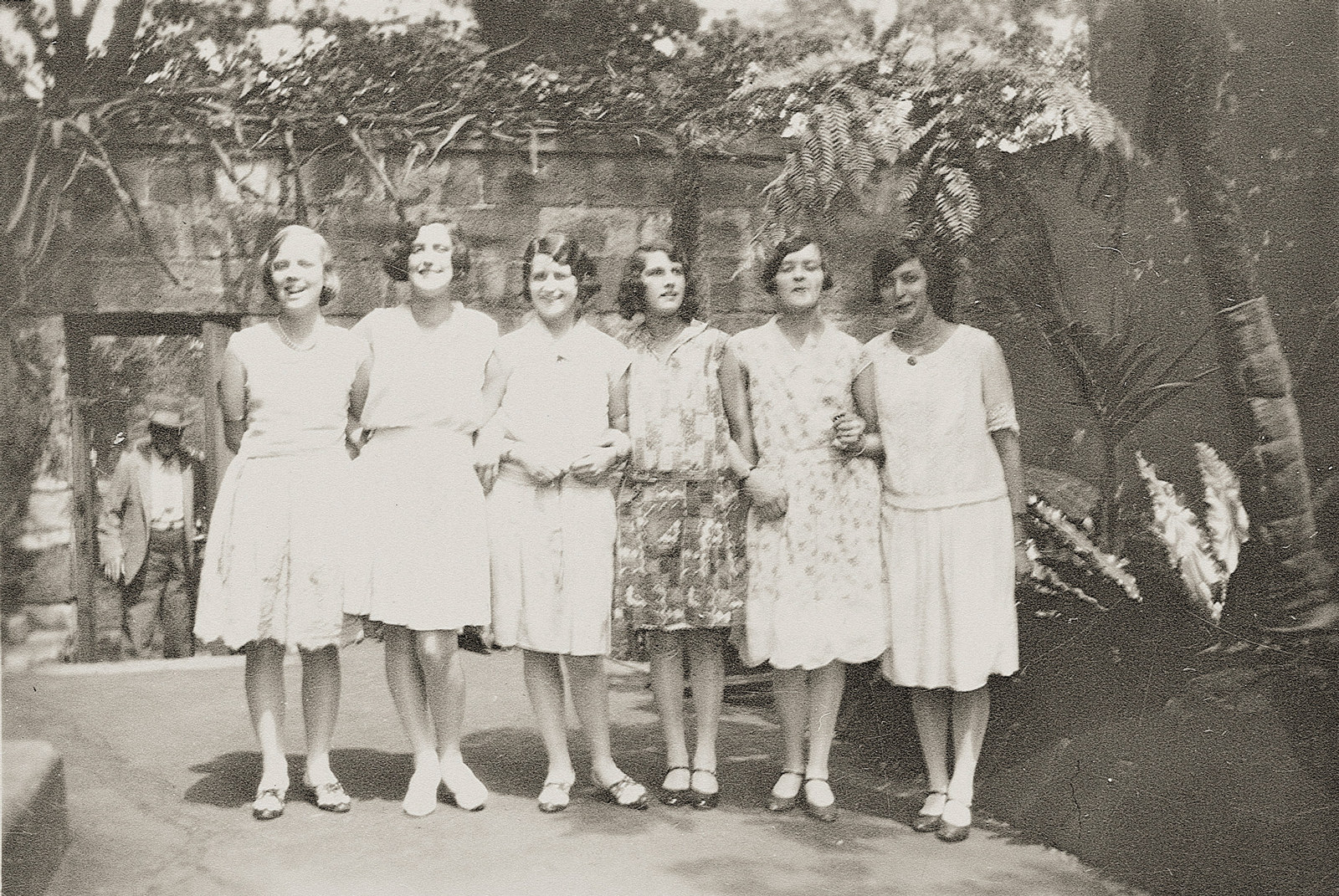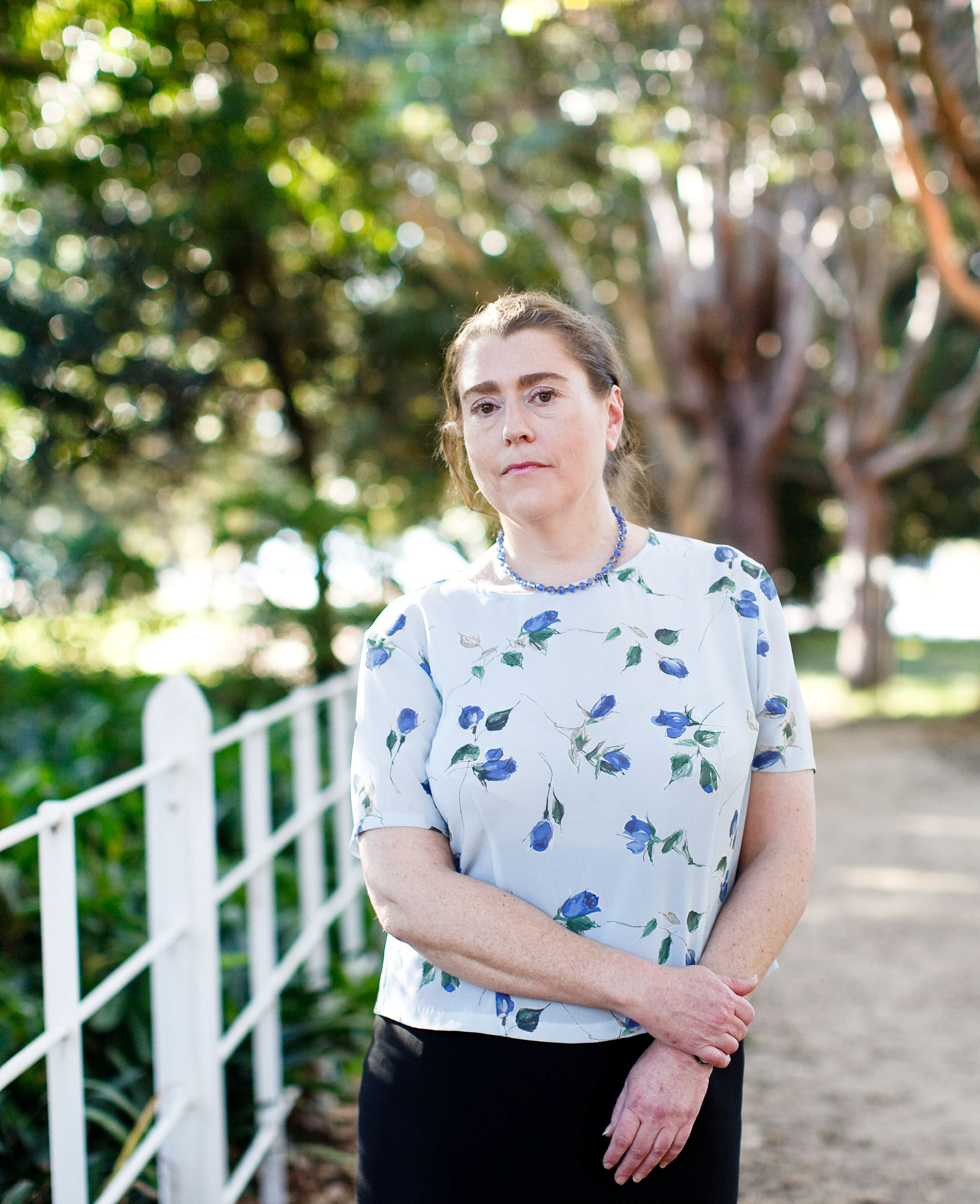The changing face of the Mint
As photographers documented the evolving face of the Mint, they recorded changes to the site and streetscape.
Constructed in the 1810s, the ‘Rum Hospital’ building and its additions have remained an imposing presence on Macquarie Street. First as the south wing of the General Hospital, then as the Sydney branch of the Royal Mint, with its chimneys belching smoke, and later when it was occupied by a range of government departments and law courts, its forecourt transformed into a car park.
This building – once accommodation for assistant surgeons, and later a dispensary and infirmary for the poor – began its new life as the offices of the Mint in 1855, with the coining factory buildings constructed to the rear. By the early 20th century, with its antiquated machinery, the Mint was no longer economically viable, and it closed in 1926. As various government agencies moved in and out, the site became a rabbit warren of subdivided buildings and makeshift structures. It survived repeated calls for demolition and plans to improve Macquarie Street and erect new public buildings on the site.
The original General ‘Rum’ Hospital buildings still dominated the streetscape in 1870. In the foreground of the image above stands the south wing, the Mint, with its police station and guard house on Macquarie Street. Beyond lies the long central block, soon to be replaced by the present-day Sydney Hospital. The north wing – which had become Parliament House – had been augmented with new chambers at either end. St Stephen’s Church is visible to the left, on the site now occupied by the State Library of NSW.
One of a series of ten photographs forming a panorama, this view shows the relationship between the Mint (foreground left), the Hyde Park Barracks (foreground right) and the remnant native vegetation and introduced plantings of the Domain, with the buildings of Woolloomooloo in the distance. The front hospital building retains its original form, but the remainder of the site has been transformed by the coining factory buildings, with their chimneys, skylights and outbuildings.
Sometimes shrouded in smoke from the towering chimney, the Union Jack flag flew proudly above the site, indicating that it was the Sydney branch of the Royal Mint in London. It was hauled down for the last time at sunset on 31 December 1926, marking the closure of this British institution in Sydney.
The Mint remained securely behind its iron palisade fence, despite various proposals to relocate it. Macquarie Street (widened in 1914) was increasingly consolidating its role as Sydney’s premier street – the seat of government and law – and it was considered no place for an industrial complex. In its declining years passing pedestrians occasionally glanced at the aging institution, by then in need of ‘urgent’ repairs. Initially due to be closed in 1923, the Mint eventually ceased operations in 1926.
After the Mint closed in 1926 strict security was no longer an issue. The entrance gates were thrown open and cars began to occupy the carriage loop. The striped canvas awnings, or sunblinds, fitted to the upper verandah are a remnant of a feature used on the building since the 1860s. In the background is the present-day Sydney Hospital.
As more and more government agencies crowded the Mint site, the demand for parking increased. The forecourt was stripped of its garden beds, the front fence was removed, and cars filled every available space.
Published on
Related

Museum stories
A rum deal
When Lachlan Macquarie began his term as governor of NSW in 1810, Sydney was in desperate need of a new hospital

After the Royal Mint
Between 1926 and 1997 almost 20 different government departments and law courts came and went from the Mint buildings

Unexpected views
Over the decades, photographers have captured unexpected glimpses of the Mint’s history

Francis Greenway: the ‘future safety’ of the Rum Hospital buildings
When Sydney’s Rum Hospital was completed in 1816, the buildings were already showing signs of potential collapse, but newly-appointed Civil Architect Francis Greenway came to the rescue
